Photo © Alexa Elliot
Photo © Alexa Elliot
Photo © Alexa Elliot
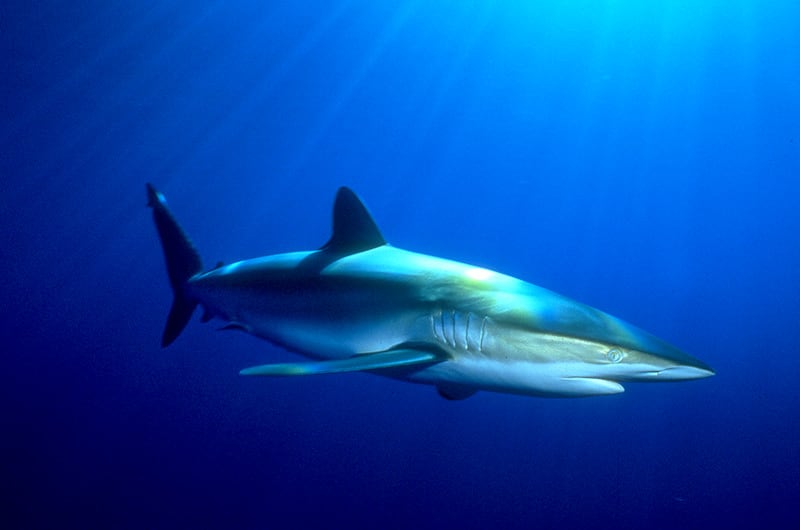
Typical species:
Silky shark
Photo © BluePlanetArchive.com
Ground sharks
The order of the ground sharks consists of 8 families with more than 270 species. More than half of all known shark species are ground sharks.This order also represents the most typical sharks.
Their distinguishing features are a nicitating membrane (a flap of skin that functions as a third eye lid), 2 dorsal fins, an anal fin and five gill slits.
Most of these sharks are found in tropical and temperate waters.
Ground sharks possess all forms of reproduction such as oviparity, aplacental viviparity (ovoviviparity) and viviparity.
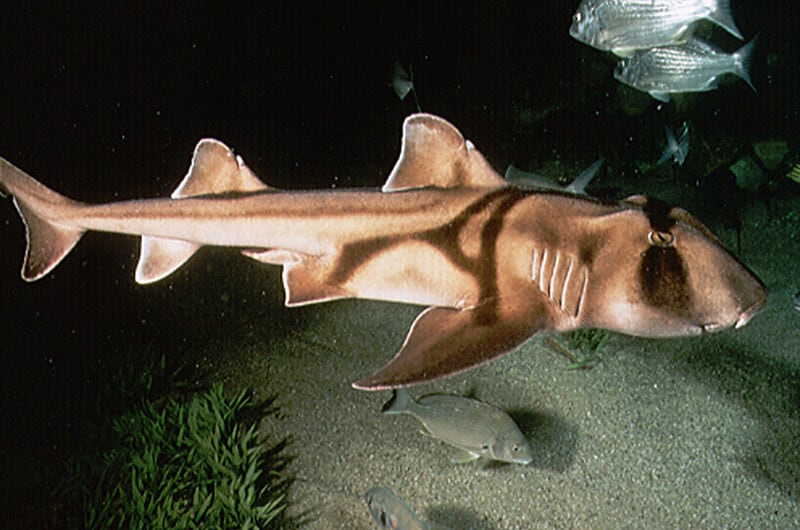
Typical species:
Port Jackson shark
Photo © BluePlanetArchive.com
Bullhead sharks
The order of the bullhead sharks comprises one family with only one genus.There are only 9 known species of bullhead sharks. These bizarre looking sharks possess strong spines in front of both dorsal fins.
As opposed to the other "spine-wearing" group, the dogfishes, bullhead sharks possess anal fins. As their name implies, their heads are very dominant with big ridges above their eyes and they have a broad snout with very large labial furrows. Based on their heterogeneous teeth (their scientific name "Heterodontus"stands for different shaped teeth) they are considered as primitive group.
Members of this order live only in the waters of the Pacific and Indian Oceans.
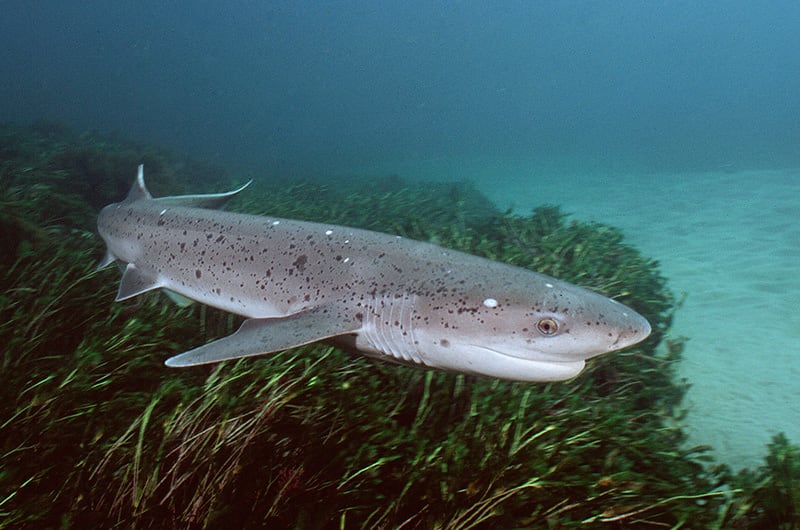
Typical species:
Broadnose sevengill shark
Photo © Marinethemes.com
Frilled and cow sharks
This order is the most ancient one. It consists of 6 species (2 families and 4 genera). The most distinguishable feature are 6 or even 7 gill slits. This is considered a rather primitive feature, as most modern sharks possess only 5 gill slits. Compared to sharks of other orders, frilled and cow sharks only have one dorsal fin.
These sharks have a widespread distribution and live preferably in deeper waters.
The knowledge about their biology is still fragmentary.
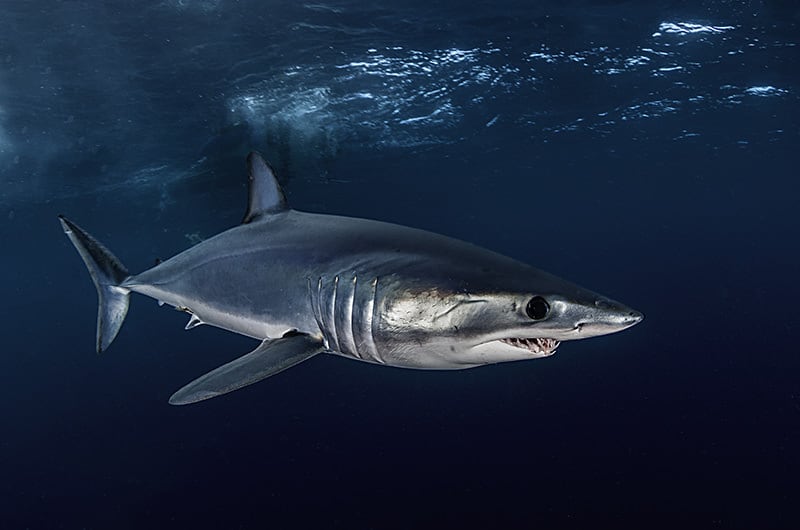
Typical species:
Shortfin Mako
Photo © Shutterstock
Mackerel sharks
Mackerel sharks consist of 8 families, 10 genera and approx. 17 species. Among them are well known species like White Sharks or Makos but also less known species like threasher sharks and basking sharks. They are a rather diverse group that lack a singular distinguishing characteristic and for the identification a combination of different features is needed such as: origin of mouth behind the eyes, conical snout, a pair of 5 gill slits, 2 dorsal fins and, compared to ground sharks, no nicitiating membrane.
Many of these sharks possess a counter-current circulatory system (rete mirabilis). This system enables them to maintain a higher body temperature giving them an advantage over prey having changing body temperature.
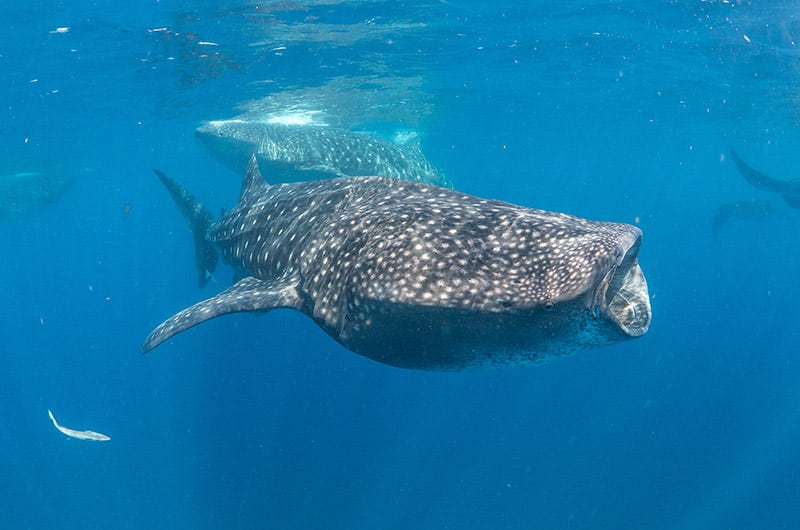
Typical species:
Whale shark
Photo © Simon Pierce
Carpet sharks
This order represents a very diverse group with respect to size and shapes. It consists of 7 families and 13 genera comprising approx. 34 species. Assorted members of this group include such different forms as whale sharks, nurse sharks, wobbegongs and zebra sharks. They primarily live in the shallow tropical waters of the Indo- and Westpacific region.
Carpet sharks have barbels and spiracles. Spiracles are openings located behind their eyes and are used to suck in sediment free water from above the ground.

Typical species:
Longnose sawshark
Photo © BluePlanetArchive.com
Sawsharks
Saw sharks (9 species) are a very unusual group that is often confused with sawfishes, which are rays. The most obvious difference between the two is that saw sharks possess barbels and the teeth, located on the prolonged snout, are different sizes. Only five species are known. One species, the sixgil sawshark (Pliotrema warrani), possesses 6 gill slits and lives on the south-easternCape Coast of South Africa.
Not much is known about the general biology of this order.
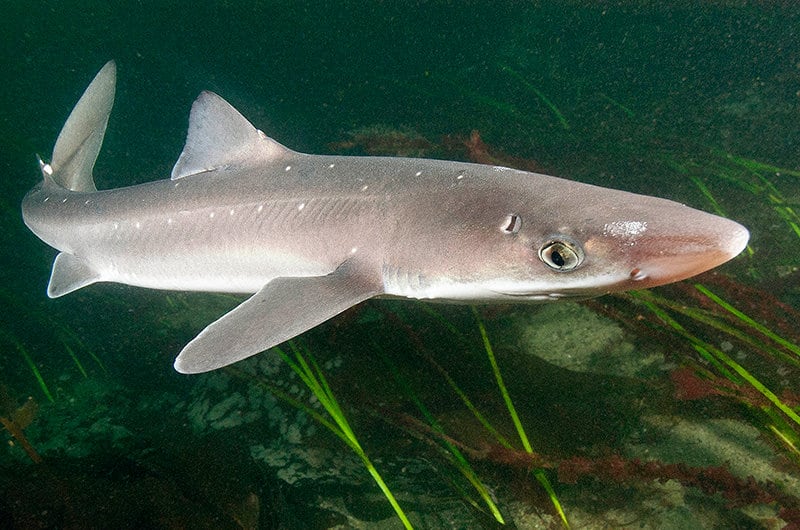
Typical species:
Spiny dogfish
Photo © Marinethemes.com
Dogfish sharks
This order represents the second largest order and includes 7 families and about 113 species and their most distinguishing feature is the lack of an anal fin. Most species also have a spine in front of the first dorsal fin. The majority are deep water species, and some have luminescent organs. Certain species can reach large sizes for instance the greenland shark (Somniosus microcephalus) with 7 m. Scientists assume that the most abundant species of all known sharks may be the spiny dogfish (Squalus acanthias), the main species used for "fish & chips".
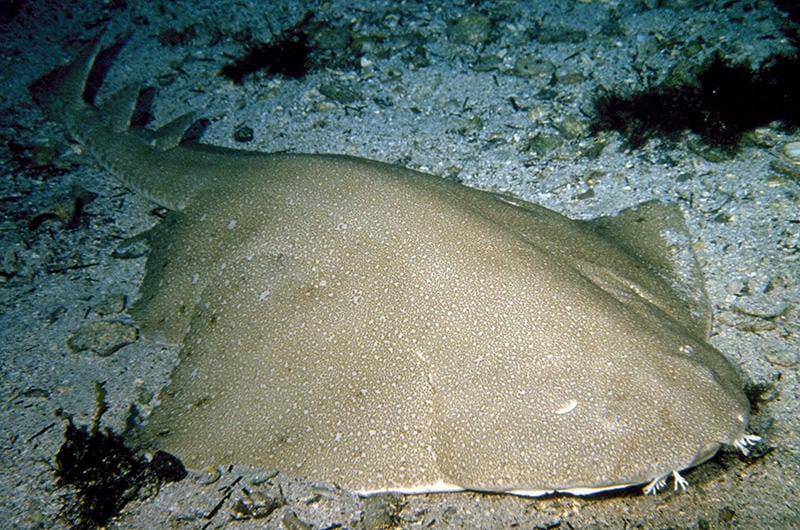
Typical species:
Australian angelshark
Photo © BluePlanetArchive.com
Angelsharks
Like saw sharks, angel sharks are also often misidentified as rays. The most obvious difference is that angel sharks possess pectoral fins that are not attached to or connected with the head. Angel sharks also possess an enlarged caudal lower lobe but, like dogfishes, do not possess anal fins.
This order includes 18 species, most of them of smaller sizes. An exception is the japanese angel shark (Squatina japonica), that reaches 2 m.
Unique in angel sharks is that the lower lobe of the tail is longer than the upper lobe.
Angel sharks spend most of the day buried in sand. Their range is from very shallow water up to 1,300 m.